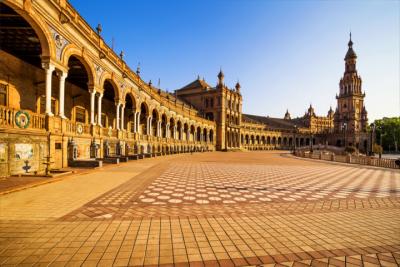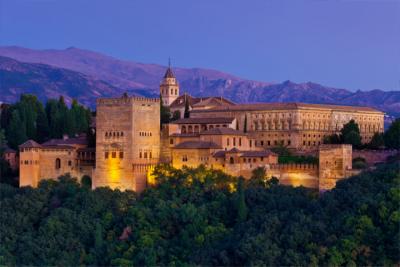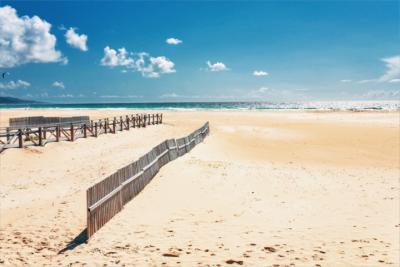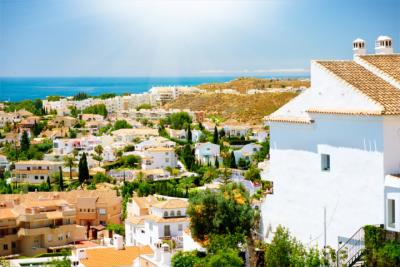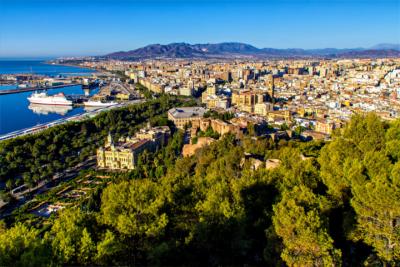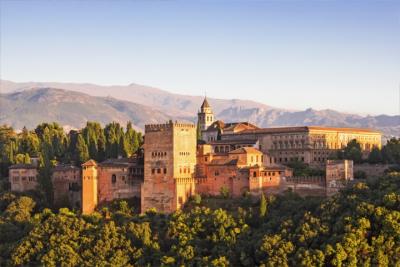Travel Offers
Travelmyne Featureprint
Distance
Andalusia – A Story from One Thousand and One Nights
Andalusia is the Spanish region in which you feel the Moorish years of reign and the Spanish image of sun, temperament and flamenco most distinctively. Walking through the alleys of an Andalusian city is like diving into a story from One Thousand and One Nights.
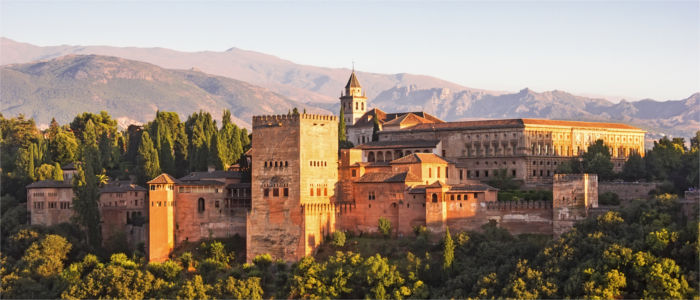
Geography - The most southern Spanish community
Andalusia is the most southern and the second biggest (83,000 km²) autonomous Spanish community. Andalusia's capital is Seville and the country's territory is divided into eight provinces: Almeria, Cádiz, Córdoba, Granada, Huelva, Jaen and Malaga. The region borders on the Mediterranean Sea and the Atlantic Ocean in the south, Portugal in the west, Murcia in the east as well as Extremadura and Castilla-La Mancha in the north. With about 8 million inhabitants, Andalusia is the most populous Spanish region. Prominent geographical points are the Sierra Nevada, the highest mountain range on the Iberian Peninsula, and the Strait of Gibraltar, which separates Spain from Africa. The climate in Andalusia is mostly Mediterranean with mild winters with high precipitation and hot, dry summer months.
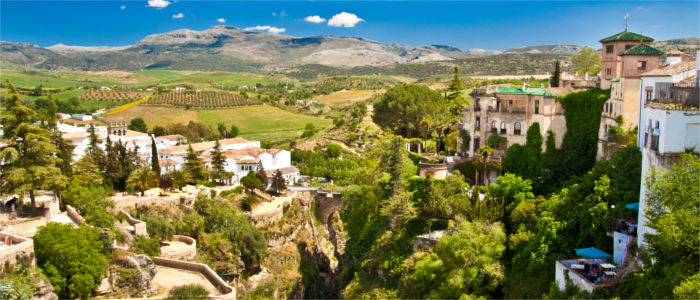
Nature - Olive and fir trees as well as the only natural desert in Europe
Andalusia's landscape is very varied. There are wonderful, fine sandy beaches at the coast, which stretch for miles and allure numerous visitors every year. The Costa del Sol at the Mediterranean Sea and the Costa de la Luz at the Atlantic Ocean are connected to each other by the Strait of Gibraltar. Towards the heartland, you find olive tree and stone pine groves, oak and fir forests, the Sierra de Grazalema - Spain's region with the highest precipitation - as well as Europe's only natural desert, the Tabernas Desert. More natural beauty is present in the mountainous landscape of the Sierra Morena, the Guadalquivir river basin and the Sierra Nevada with the highest peak of the Spanish mainland, the Mulhacén (3,482 m).
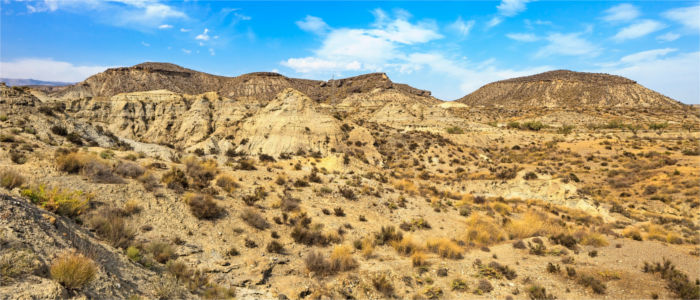
Culture - Flamenco, bullfights and Moorish cultural heritage
The name "Andalusia" is of Moorish origin (Al-Andalus) and has been referring to this Spanish region since the 8th century. Although many peoples, for example the Punics, the Romans and the and the western Goths, have been living on its territory in the course of history, the rule of the Moors from 711 to 1492 was the most significant period of Andalusia's past. Andalusia was under Islamic rule for a longer time (781 years) than any other Spanish region, which is apparent from the Emirate and Caliphate of Córdoba as well as the Emirate of Granada. Many buildings characterised by the breathtaking architecture of that period have been preserved with the Alhambra in Granada, the Mezquita in Córdoba and the Giralda in Seville as the best-known examples, which are part of the UNESCO World Heritage. These three cities in addition to the town Tarifa (Spain's most southern town), Jerez de la Frontera (city of Sherry) and Ronda with its extraordinary position on a rock plateau which is crossed by a gorge are the country's cultural highlights. The Andalusian people are very friendly and open as well as proud of their traditions and customs, which they like to show holidaymakers. Two common and world-famous traditions are flamenco and bullfighting, which originate in Andalusia and are part of many public festivals (ferias). Furthermore, the legends of Don Juan and Carmen come from the former Moorish territory.
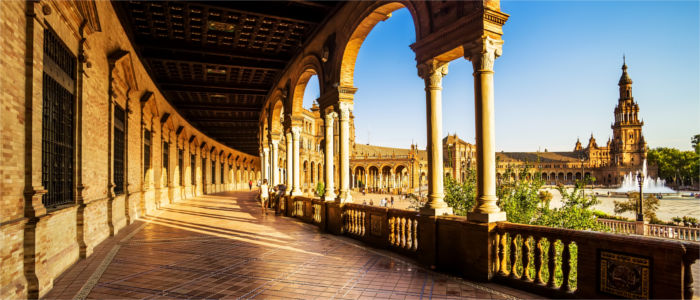
Experience - White houses, wonderful patios and exuberant celebrations
Andalusia is known for its white villages, which you can see from a distance. Whitewashed houses, red tiled roofs, iron banisters and narrow, winding alleys are characteristic of the Pueblos Blancos. The best-known white village is the town Ronda, which can be explored along the Ruta de los Pueblos Blancos ("road of the white villages"). Another architectural highlight are the patios, small inner yards, which you find in most old houses. Especially the city Córdoba is famous for its beautiful and numerous inner yards. Since 1993, a competition takes place in May every year to determine the most beautiful patio (Concurso de Patios Cordobeses). Other special events are the Semana Santa (Holy Week) and the Feria de Abril (April Mass). The Semana Santa starts on Palm Sunday and ends one week later on Easter Sunday with great processions. Numerous so-called nazarenos (members of a fraternity) walk along a certain way through the city in the midst of pasos, illustrations of the Redeemer and Virgin Mary on wooden frames. They are accompanied by bands. These significant processions take place in Seville, Granada and Málaga. But small towns have their own celebrations too. Two weeks after Easter, during the Feria de Abril, the city of Seville is in an exceptional state, during which even the Andalusian schools are closed. You find women in flamenco dresses, decorated horses, which are part of many celebrations, and men in suits on the streets. At the same time visitors can dance to traditional music in small party tents or taste local specialities. Besides meat and cheese, fish and seafood are basic ingredients in the Andalusian cuisine. A special dish are the sardinas assadas (grilled sardines), which you can order in almost any restaurant in the region. The best-known Andalusian dish is the gazpacho andaluz, a cold vegetable soup made of peppers, tomatoes, cucumber, garlic and olive oil, which is often eaten in the warm summer months.
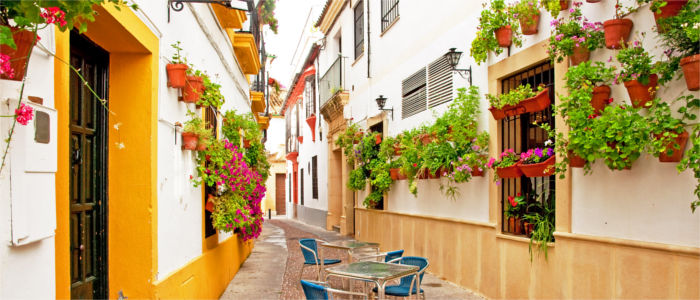
Activities - Bathing, ski or hiking holidays
Travellers do not get bored in Andalusia as there are numerous opportunities for being active during your holidays here. First of all, the region is the ideal location for hikers. In the Sierra Morena, for example, you can explore the unspoiled nature on a climbing or mountaineering tour. In the Sierra Nevada, on the other hand, visitors can go skiing on the pistes which are always covered in snow. Water sports like sailing, fishing or diving can be practised at the Atlantic or Mediterranean coast. A true insider tip for windsurfers is the town Tarifa with its unbelievably fine sandy beaches, which offer excellent wind conditions for surfing adventures. In addition, you can use the region's many golf courses or ride along the beaches on horseback.
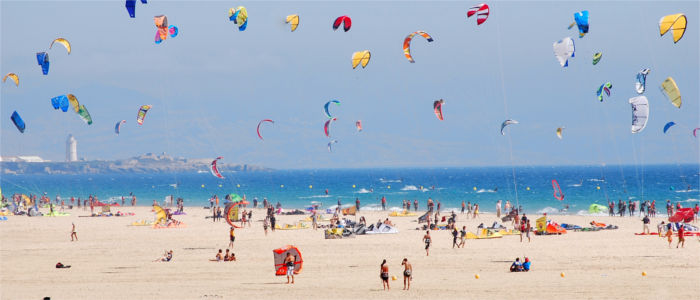
Information
There is no best or most popular travel time in Andalusia. Depending on your preferences, you can visit the country at any time of the year. Travellers who want to have holidays at the seaside should arrive in summer. Spring is milder and the perfect season for visiting the many sights. Unfortunately, the sea is still quite cold at that time. In autumn, however, you can enjoy both mild temperatures for city trips and warm water temperatures for afternoons at the beach. The region is travelled by fewer tourists in winter, so that holidaymakers can see the region's sights without being surrounded by crowds of people at that time. You can arrive by train and bus or by plane. The airport in Malaga is the country's third biggest airport.
Sun, temperament, flamenco and bullfight come to mind when you think of Spain when, in fact, these things are characteristic of Andalusia. Holidays in Andalusia mean diving into a magical world with an Arabic touch with sun, fine white sandy beaches, numerous cultural heritage sites and Mediterranean nature which is unspoiled for the most part.

